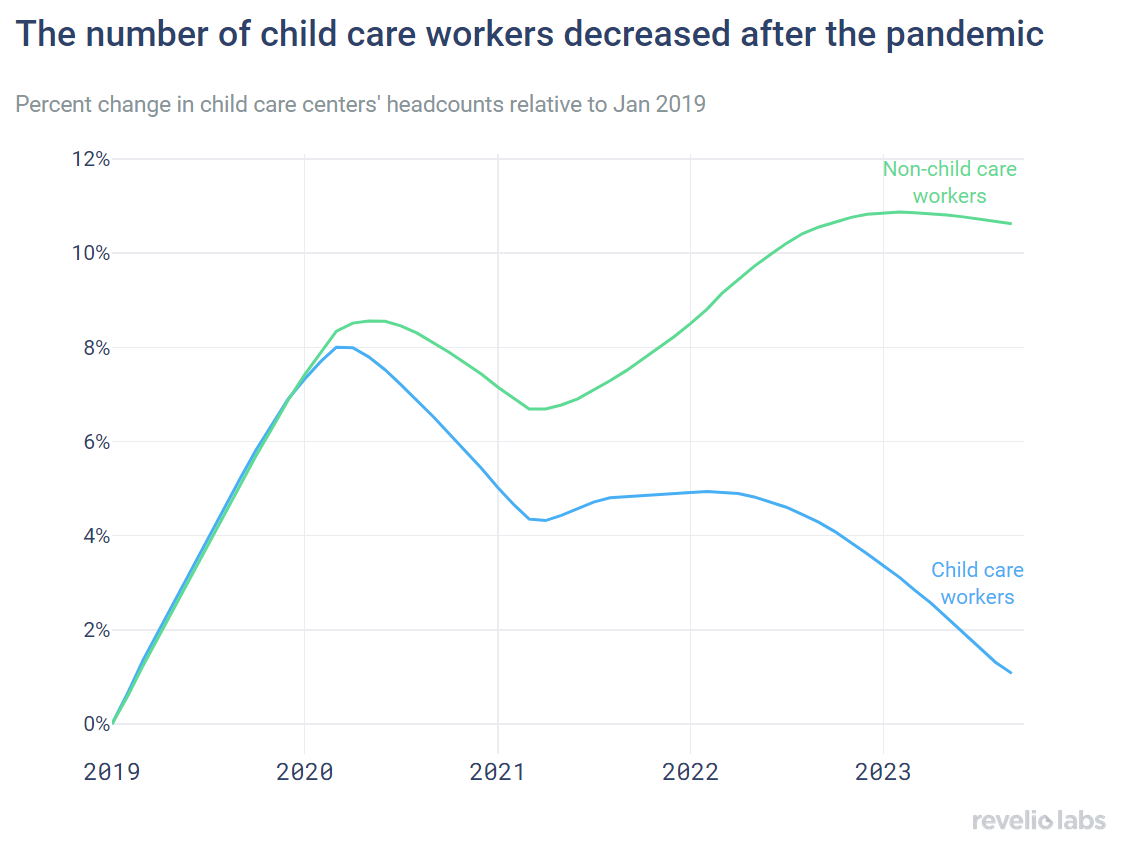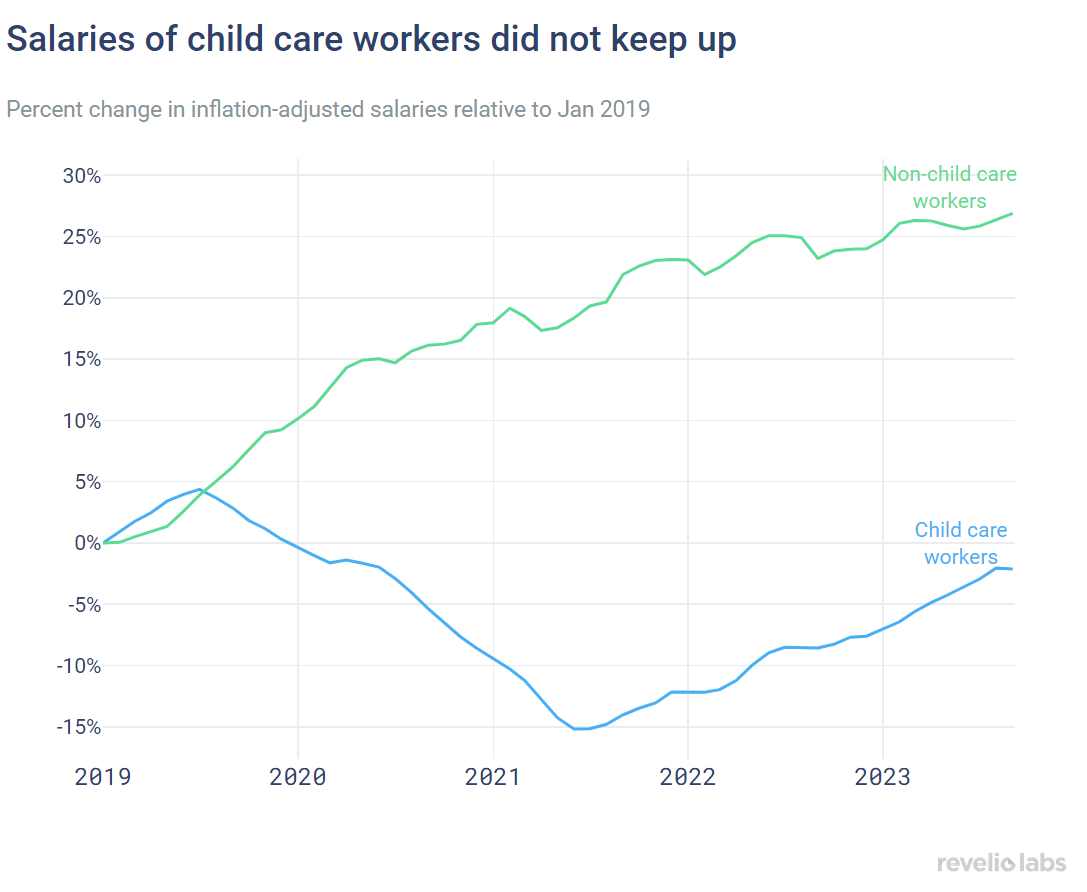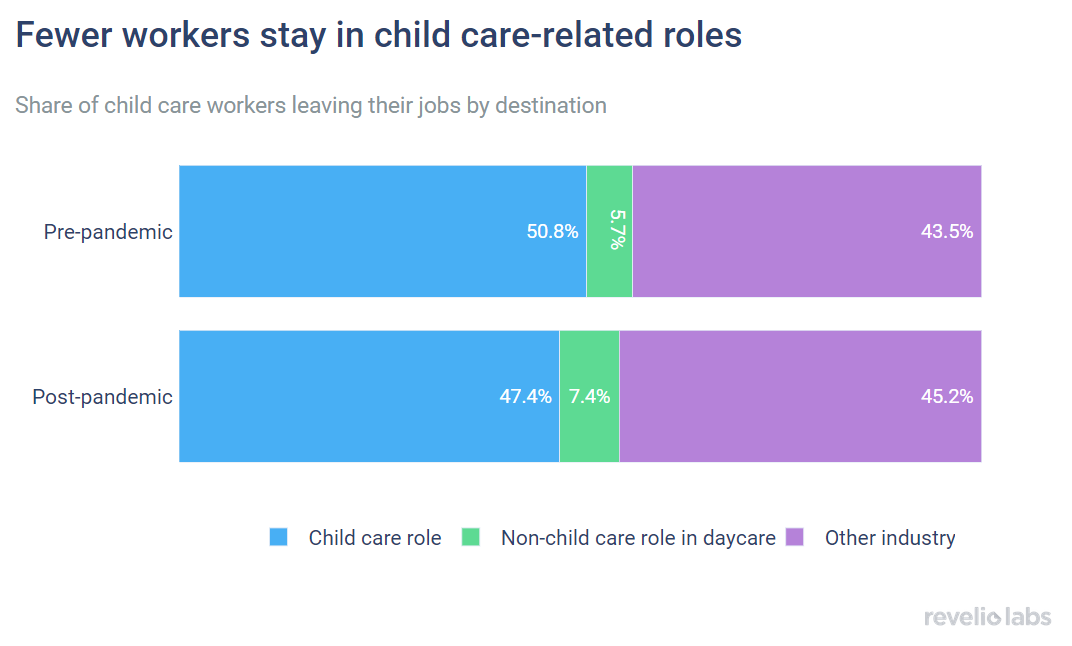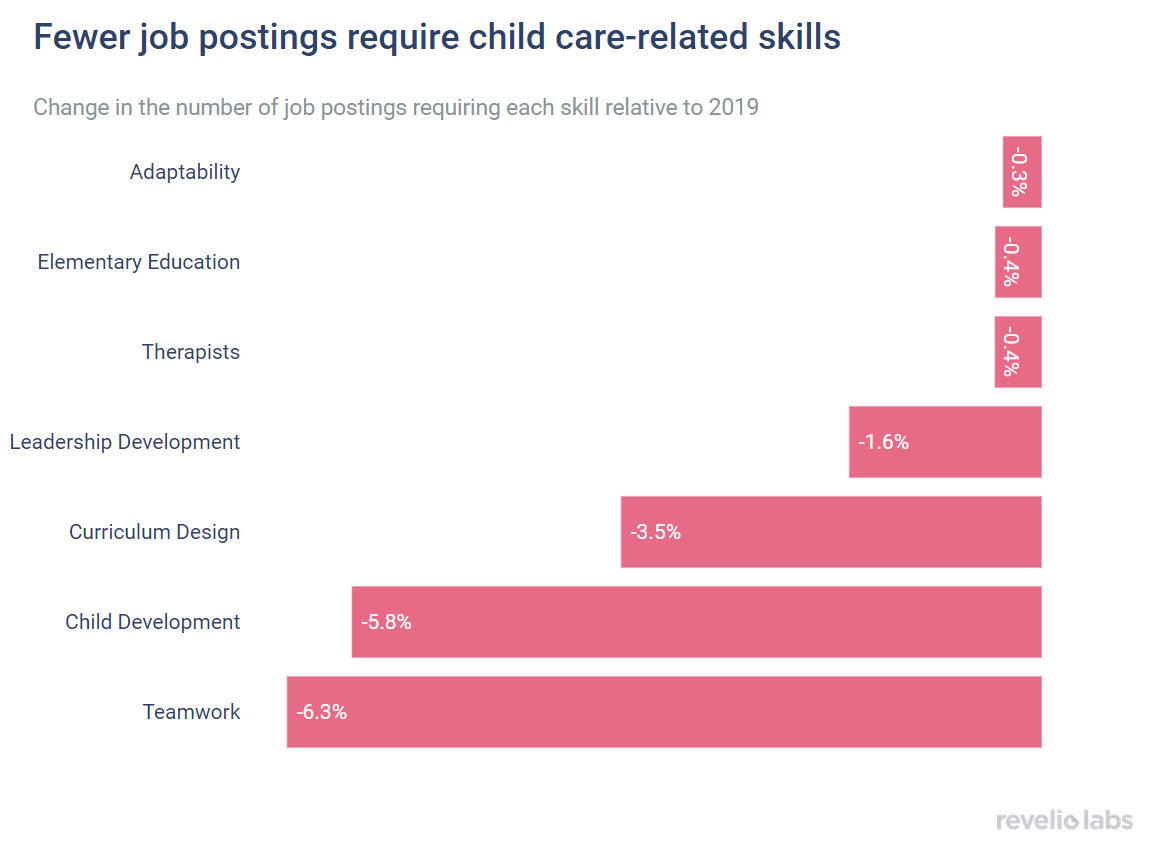Who Will Take Care of America’s Children?
The mass exodus of the modern day Mary Poppins

The number of child care workers has been decreasing since the pandemic, while the number of non-child care workers in day care centers has been increasing, suggesting that child care workers are transitioning to non-child care roles.
One possible explanation for this trend is salaries. Child care workers’ salaries have been declining in real terms, while non-child care workers’ salaries have been increasing.
Not only has the number of child care workers decreased, but also the demand for high quality child care workers has decreased. Less job postings for child care workers require experience in child care and child development compared to 2019.
Last week we looked at how employers have been responding to the child care crisis in the US. Companies have increased child care benefits, particularly in the form of flexible spending accounts, which have limited effectiveness in retaining female employees. This week, we turn our attention to another critical component of the child care crisis: the contraction of the child care workforce. While the labor market has fully rebounded from the effects of the pandemic, the child care workforce has not followed suit. The shrinking child care workforce has led to extensive waiting lists, leaving parents waiting for up to a year to secure spots for their children in daycare. What factors have compounded the challenges faced by child care providers, and why are child care facilities grappling with significant labor shortages?
Between 2018 and 2020, there was a notable increase in the number of people employed in child care facilities, including not only child care workers, who are directly responsible for caregiving, but also administrative staff. However, our labor market analysis shows that the expansion of child care workers took a dramatic downturn with the onset of the pandemic. In contrast, there has been a surge in the number of non-child care staff within these centers over the past two years. Currently, the headcount of child care workers only stands 9% higher than its level in 2018, while the number of non-child care employees in childcare facilities is 22% higher than 2018.


Several factors have contributed to the exodus of child care workers, including salaries. While salaries advertised in job postings for non-child care workers in child care centers have increased throughout the pandemic, advertised salaries for child care workers have declined substantially in real terms. Relative to 2019, inflation-adjusted salaries for child care roles have decreased by 2%, while salaries for other roles at day care centers have increased by 27%.


Sign up for our newsletter
Our weekly data driven newsletter provides in-depth analysis of workforce trends and news, delivered straight to your inbox!
The struggle to retain child care workers is not a recent issue, but has been further exacerbated by the pandemic and the ongoing decrease in salaries. An increasing number of child care workers are now choosing to transition into non-child care roles in day care centers or explore job opportunities in different industries. Before the pandemic, roughly 50% of departing child care workers moved into another child care-related position. However, after the pandemic, only 47% of child care workers who changed jobs opted for new positions as caregivers.


In addition to the large outflows of child care workers, the demand for child care workers in child care centers in the US has declined substantially as many day care centers have permanently closed between December 2019 and March 2021. Another concerning trend has emerged: Day care centers are hiring less-skilled workers. Our labor market analysis reveals that fewer job postings for child care professionals now emphasize skills related to child care and child development relative to 2019.


The child care problem in the US will only become worse with the expiration of federal support from the American Rescue Plan. More child care workers will leave the profession for other jobs, which will exacerbate the ongoing availability and affordability issues. Unfortunately, working mothers will be hit the hardest as they have to bear the responsibility of caring for children, which will further widen the gender gap at work.

